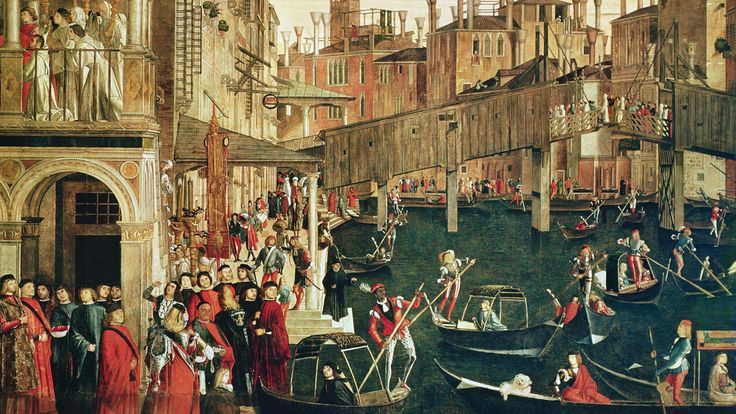
Rise of Italian city-states
Venice, Metropolitan City of VBetween the 12th and 13th centuries, Italy developed a peculiar political pattern, significantly different from feudal Europe north of the Alps. As no dominant powers emerged as they did in other parts of Europe, the oligarchic city-state became the prevalent form of government. Keeping both direct Church control and Imperial power at arm's length, the many independent city states prospered through commerce, based on early capitalist principles ultimately creating the conditions for the artistic and intellectual changes produced by the Renaissance.
Italian towns had appeared to have exited from Feudalism so that their society was based on merchants and commerce. Even northern cities and states were also notable for their merchant republics, especially the Republic of Venice. Compared to feudal and absolute monarchies, the Italian independent communes and merchant republics enjoyed relative political freedom that boosted scientific and artistic advancement.
During this period, many Italian cities developed republican forms of government, such as the republics of Florence, Lucca, Genoa, Venice and Siena. During the 13th and 14th centuries these cities grew to become major financial and commercial centers at European level.
Thanks to their favourable position between East and West, Italian cities such as Venice became international trading and banking hubs and intellectual crossroads. Milan, Florence and Venice, as well as several other Italian city-states, played a crucial innovative role in financial development, devising the main instruments and practices of banking and the emergence of new forms of social and economic organization.
During the same period, Italy saw the rise of the Maritime Republics: Venice, Genoa, Pisa, Amalfi, Ragusa, Ancona, Gaeta and the little Noli. From the 10th to the 13th centuries these cities built fleets of ships both for their own protection and to support extensive trade networks across the Mediterranean, leading to an essential role in the Crusades. The maritime republics, especially Venice and Genoa, soon became Europe's main gateways to trade with the East, establishing colonies as far as the Black Sea and often controlling most of the trade with the Byzantine Empire and the Islamic Mediterranean world. The county of Savoy expanded its territory into the peninsula in the late Middle Ages, while Florence developed into a highly organized commercial and financial city-state, becoming for many centuries the European capital of silk, wool, banking and jewellery.
